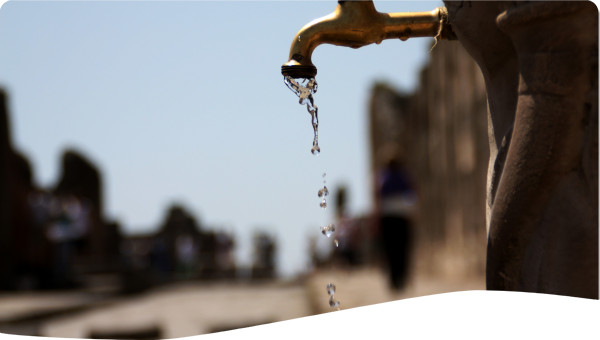Desires to maximise irrigated agriculture during the Soviet era has resulted in degradation of water resources. After independence, most countries in the region adopted national policies dealing with water supply and sanitation. Furthermore, since 2002, Global Water Partnership in Caucasus and Central Asia (GWP CACENA) promotes and supports introduction of IWRM. The main lesson learnt is that an IWRM approach should include any essential infrastructure needed for development.
During the Soviet period, federal government constructed water infrastructure and allocated water resources in order to maximize irrigated agriculture. This policy brought some economic benefits and social stability to the region of Central Asia, but it also resulted in environmental challenges.
A priority of USSR was to exploit their energy and mineral resources for the global market, while at the same time people’s livelihoods are mainly limited by poor governance of the water resources. This situation has left millions of rural people in poverty and ill-health mainly due to water logging, polluted waters, and lack of safe water supply and sanitation.
Today, all Central Asian countries pay a very high social cost because of lack of access to safe water and sanitation and water-related diseases.
Soon after the declaration of independence in 1990s, countries of Central Asia and Caucasus have adopted their national policies dealing with water supply and sanitation (WSS).
The progress was achieved in terms of adoption of legal instruments; however, enforcement is still behind a declared political will to solve severe problems in water management sector.
The WSS sector is financed by governments and is deeply under-budgeted. There is a hope that foreign investments could support the development of this sector, however, a high corruption, low capacities and outdated technologies do not attract foreign investors.
Since 2002, Global Water Partnership in Caucasus and Central Asia (GWP CACENA) promotes and supports introduction of IWRM in all states of this region. Although primary activities focus on advocating for IWRM plans and good water governance, these principles are also applicable to the implementation of water infrastructure.
GWP CACENA initiated a study on the status of WSS in all 8 countries where Country Water partnerships are active (Kazakhstan, Uzbekistan, Kyrgyzstan, Turkmenistan, Tajikistan in Central Asia and Azerbaijan, Armenia and Georgia in Southern Caucasus).
It was the first time that a comprehensive focus was made to this element of water management sector in a light of IWRM approach. Although, there were some surveys made in the past, mostly in cooperation with international consultants, fragmented issues in water demand management were addressed.
The survey addressed the water management functions rather than problems in water management sub-sectors. A value added is that the survey was conducted by all CACENA national experts and the same methodology of data gathering and analysis of the research results were used.
In addition to the assessment of technical data on the status of water infrastructure, the review dealt with interlinked aspects, such as regulatory frameworks and institutional settings of water provision, stakeholder and public involvement, financing mechanisms including subsidies and cross subsidies.
The review was completed in 2009 and outlines important recommendations to national governments in eight CACENA countries. The survey also allowed comparing individual countries faced to similar economic and social environs. The main results of the survey are as follows: Inadequate governance of the WSS systems and incomplete legal and regulatory framework are hand in hand with a low qualification level of the specialists, especially in the remote areas. A long term under-investments in water supply and sanitation sector resulted in a high rate degradation of existing infrastructure systems with a high water loss rates. Water tariffs are deliberately lowered in order to alleviate the load on household budgets and to prevent possible social tensions; application of water meters and economic incentives are rare. The public and stakeholders involvement is limited to the right to be informed and a real participation in decision making is put aside as second priority.
The benefits and costs of water infrastructure are often far reaching, have social and environmental implications and are unlimited to any single sector. This makes the IWRM principles of economic efficiency, environmental sustainability and social equity relevant for infrastructural development.
Water infrastructure needs to be planned within larger and long-term development strategies that include investments in for instance energy, roads, housing and social services.
Putting an IWRM approach into practice should include any essential infrastructure needed for development. However, hard investments in infrastructure must be combined with soft institutional investments, supporting an appropriate policy and legal environment, robust institutions and adequate participation from stakeholders.
 Case studies
Case studies
